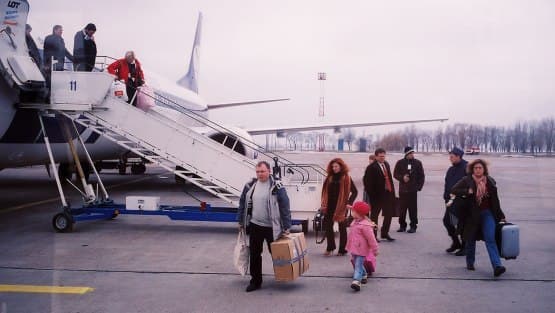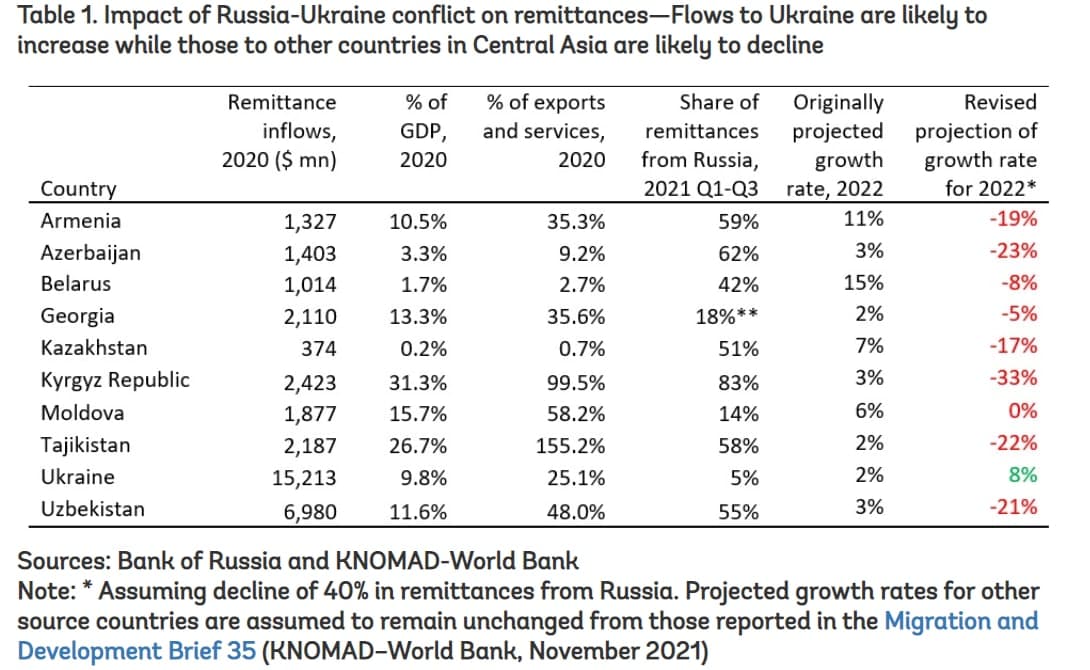Remittances to Uzbekistan expected to drop – WB
The volume of remittances to Uzbekistan is expected to decrease by 21% in 2022, the World Bank experts said.

Photo: WB
Many countries in Central Asia are highly dependent on remittances from Russia. For example, in the Kyrgyz Republic, the share of remittances from Russia was 83 percent of the total remittance receipts during Q1-Q3 of 2021. During the same period, Azerbaijan, Armenia, Tajikistan, and Uzbekistan received more than 50 percent of their remittance inflows from Russia. Remittances provide a financial lifeline to many of these countries. For example, in the Kyrgyz Republic and Tajikistan, remittances in 2020 were respectively 31 percent and 27 percent of GDP and were comparable to or even larger than the countries’ exports of goods and services.
Remittance flows to many Central Asian countries are likely to be affected adversely. Based on an initial assessment of the first-round effects of a decline in economic activity in Russia and a weakening of the ruble against the US dollar, the revised projected growth rates of remittances in this region in 2022 are expected to average around -25 percentage points. For example, in the Kyrgyz Republic where 83 percent of remittances originated in Russia in 2021, remittances in 2022 are likely to decline by 33 percent instead of an originally projected growth rate of 3 percent. Azerbaijan, Armenia, Tajikistan, and Uzbekistan are also likely to experience a major decline in remittance flows in 2022.
There will be a two-fold impact on remittance flows to Central Asia. A weakening of economic activity in Russia would dampen the employment and incomes of migrant workers and their ability to send remittances. The second channel of impact would be through a weakening of the ruble against the US dollar, which would reduce the nominal US dollar value of remittances sent in rubles. As of March 3, 2022, the ruble had depreciated by nearly 25 percent against the US dollar. It is likely that the weakness of the ruble will continue in 2022 despite the recent sharp increase in oil prices. Unlike in the past, the ruble and oil prices seem to have decoupled since late 2020.
The sanctions on the Russian banking system in the form of exclusion from the SWIFT network for fund transfers are likely to directly disrupt remittances through formal channels, which could lead to a partial shift to indirect and informal channels. Also, the sanctions can affect remittance flows indirectly if they lower employment and incomes for migrant workers in Russia.
These short-term projections have a high degree of uncertainty around them, dependent on the scale of the military conflict in Ukraine and the effectiveness of the sanctions on outward payments from Russia.

Related News

16:40 / 27.12.2025
Remittances to Uzbekistan jump nearly 19% in Q3

12:42 / 26.12.2025
Uzbekistan’s GDP tops $145bn in 2025, targets $240bn by 2030

12:29 / 26.12.2025
President Mirziyoyev approves Uzbekistan’s state budget for 2026

19:44 / 25.12.2025



